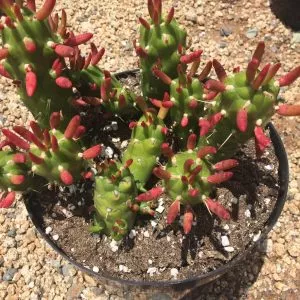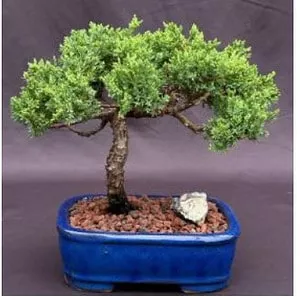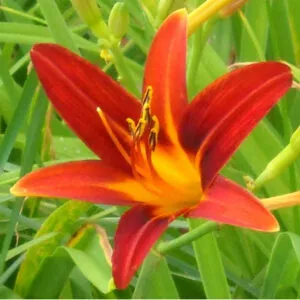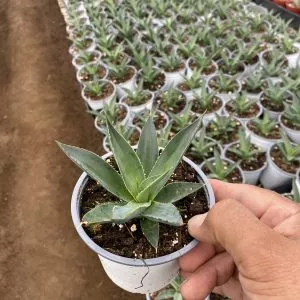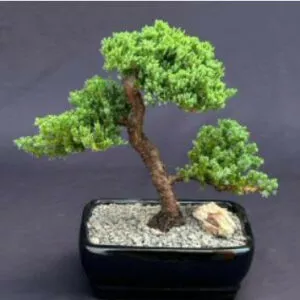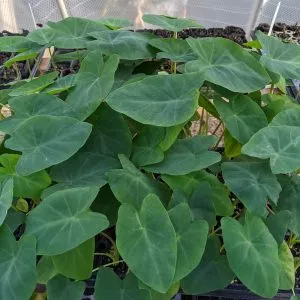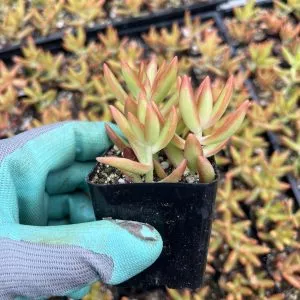No products in the cart.
Table of Contents
Recently, we spoke about the Bird of Paradise with its orange flower known as the Strelitzia reginae. But did you know there is a white Strelitzia Nicolai? Yes, there is, and today we want to help you take care of your white bird plant.
The plant is the white bird of paradise tree grown indoors for over thirty years. The white bird of paradise is acclaimed for its elegantly curling white blooms, which emerge from beak-shaped orange and blue bracts.
This exotic tropical plant, part of the Strelitziaceae family, is named for its flowers’ resemblance to cranes in flight. Native to South Africa, the rare white form of the iconic bird of paradise plant carries horticultural intrigue and cachet unmatched by many other houseplants.

Interesting Facts About The Giant White Bird
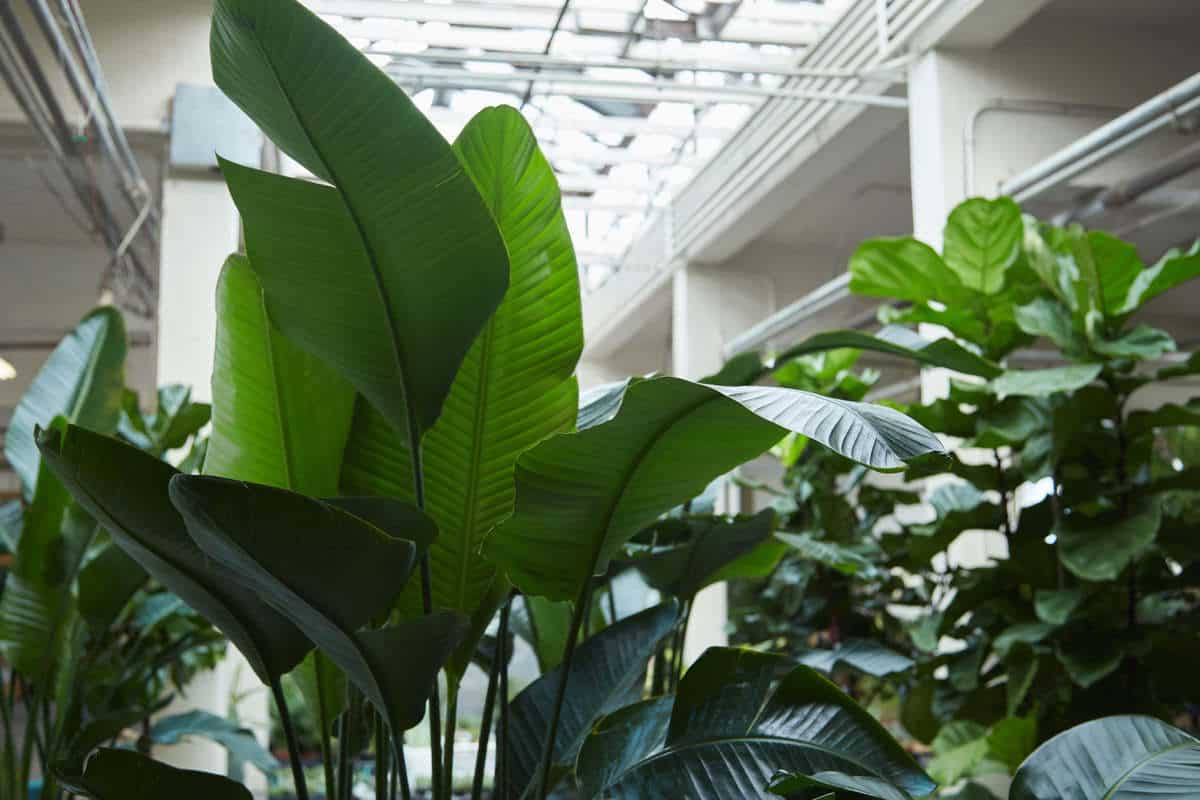
The white bird of paradise is considered native to South Africa and a member of the Strelitziaceae family. The intriguing thing is that you only find three of them in the genus:
Strelitzia caudata
Strelitzia nicolai
Strelitzia reginae
This outdoor plant has banana-like leaves that grow from clumping stalks arranged into a leaf fan position on the uppermost part of the trunk.
Another exciting thing is the extreme leaf splitting, making it look like a giant bird with white flowers and a dark blue tongue.
A mature plant can reach up to 20 feet tall, making it famous for gardens or growing in containers on the patio.
Further, it is an exotic plant known as the Wild Cape banana, white-flowered wild banana, Kaapse witwildepiesang (Afrikaans), bird of paradise, and isigude esimbalimhlophe (Nguni).
One thing is for sure growing the Strelitzia nicolai is easy outdoors and in a container. Birds of paradise are not typically considered highly toxic to pets or children, but they can still be mildly toxic if ingested.
The primary reason for their mild toxicity is the presence of alkaloids in their leaves. Alkaloids can cause gastrointestinal discomfort, including nausea, vomiting, and diarrhea, if consumed in significant quantities. This plant should be situated out of children’s and pets’ reach for protection.
For additional information, you may also check the article Which Plants Should You Avoid if You Have Kids or Pets.
Giant White Bird of Paradise Care
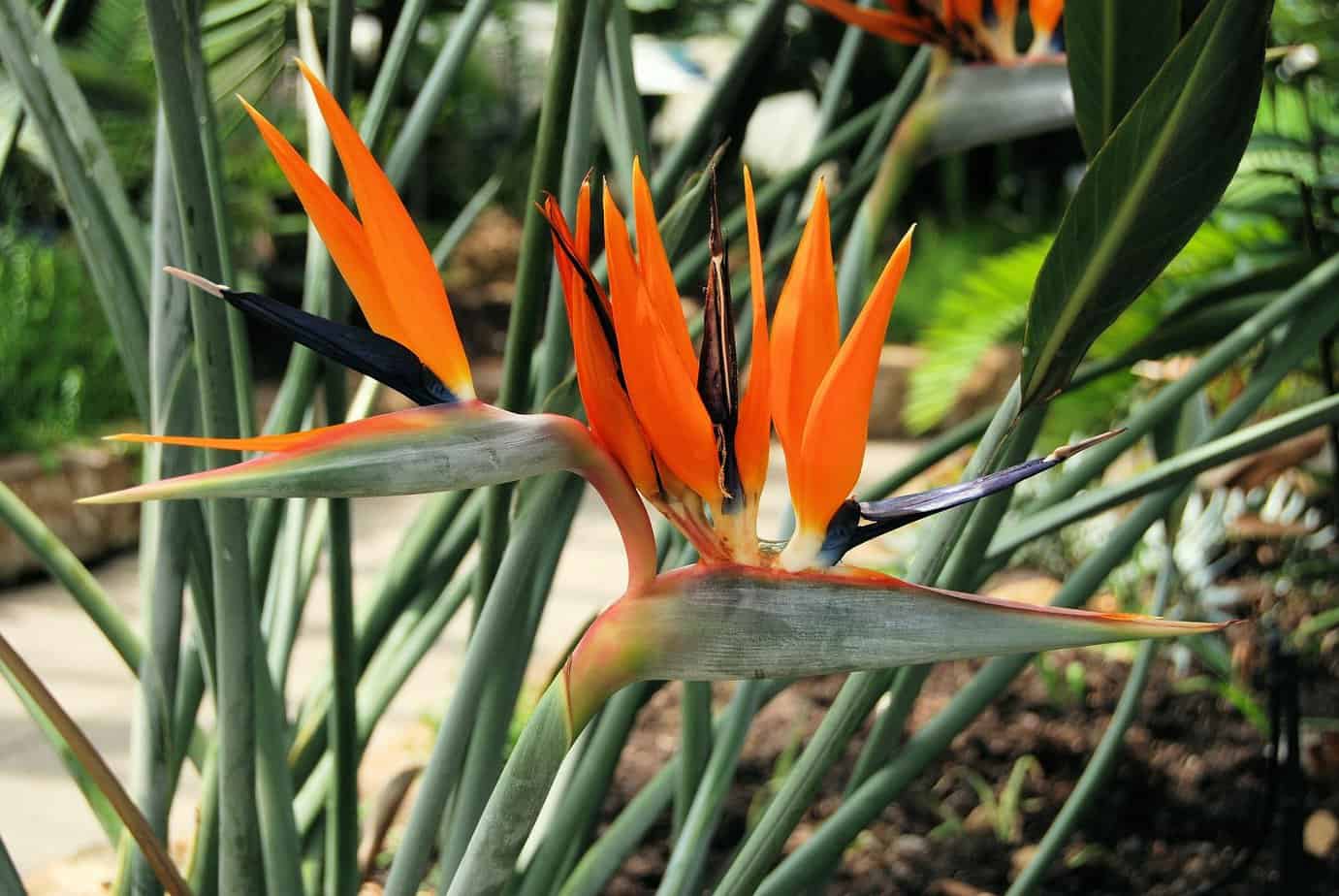
The paradise plant in your garden or home creates a lush tropical feel. You can grow them on the deck, poolside, in various landscaping, or inside the house.
The white bird of paradise grows in clusters, forming multiple stems from a single base. The evergreen look is eye-catching. You’ll see it once it starts to bloom.
Still, give your plant ample space to grow and protect it from high winds.
Best Potting Mix for Indoor Plants
Your white bird of paradise thrives in nutrient-filled, well-draining soil. These soils can range from clay and loamy to sand potting medium.
The important thing for your white bird is drainage, even if it thrives in moisture. We recommend using an all-purpose potting mix mixed with perlite for extra drainage.
Ideal Lighting For Bird of Paradise Nicolai

Your type of banana plant loves the sun and does well in spots with bright light to partial shade.
So, whether grown as indoor or outdoor plants, some partial shade to full sun is preferred for these plants to grow.
Still, too much direct sun can cause problems with the foliage becoming damaged and scorched. You will notice dark spots appearing on the leaves.
Thus, provide your bird of paradise plant with some afternoon shade in the summer.
Watering Strelitzia Nicolai Giant Bird of Paradise
Your banana plants need water, but not too much. Yet, your plant does not enjoy sitting in water as it can lead to root rot. Seo ensures that when in a pot, it has a large drainage hole.
The ground needs to dry out to 50% before watering again. So, your Strelitzia nicolai is drought tolerant to some extent.
If you do not provide them with enough water, your paradise flower will immediately let you know through the foliage.
The leaves turn yellowish when underwatered, while overwatering makes the leaves go crisp and brown. Where possible, water your plants with distilled water, which is very sensitive to salt and chlorine.
Temperature & Humidity Conditions
The white bird comes from South Africa; it is a tropical shrub and does well in warm temperatures.
The ideal temperature to keep your paradise flower is in full sun with temperatures between 65℉ and 80℉ (18℃ and 27℃) with part shade.
These shrubs are hardy, but cold temperatures can cause unfavorable conditions. So, when grown in a pot outside, it can recover from frost damage, but it is a prolonged process.
Hence, we recommend moving your white bird of paradise indoors when the frost arrives. Now, one thing these large floor plants love is high humidity. So you can mist the plant’s foliage occasionally.
The misting helps increase the moisture around it and removes dust from those gorgeous leaves.
Or you can place it with multiple plants in your tropical collection for added moisture. Another alternative is using a pebble tray.
In stock In stock In stock Only 1 left in stock
$65.99
Sold By:
Succulent Oasis
Cactus Plant Mature Opuntia Gumbi. A very different cactus with bright orange growth
Rated 4.84 out of 5 based on 352 customer ratings01
Sold By:
Succulent Oasis
$34.99
Sold By:
BubbleBlooms
Old Lady Cactus, 6 inch, Mammillaria hahniana, Crown of Flowers
Rated 4.81 out of 5 based on 279 customer ratings00
Sold By:
BubbleBlooms
$12.00
Sold By:
Smoot's Farm
Dracaena or Dragon Tree Janet Craig Compacta 4 Inch Tall Pot Live
Rated 4.89 out of 5 based on 27 customer ratings00
Sold By:
Smoot's Farm
Free Shipping
$186.89
Sold By:
BONSAI WORLD LLC
Juniper Bonsai Tree – Trained (juniper procumbens nana)
Only 1 available and it’s in 1 people’s basket
Sold By:
BONSAI WORLD LLC
Fertilizing Strelitzia Nicolai Giant Bird of Paradise
These are plants with large leaves and big feeders. Your paradise flowers enjoy regular feeding in the growing season.
But don’t feed them too much; it can burn the roots as your plant grows.
Using a slow-release fertilizer works well with your plants. You can feed your plant bi or tri-weekly from spring to summer.
But avoid feeding your white bird of paradise in the fall. Also, stop fertilizing in winter.
Your plants require no feeding in the wintertime as it goes dormant.
Propagating Your White Bird of Paradise Flower
The best method to propagate your bird of paradise white flower is through division. Of course, you can do it through the seeds or suckers, but using the division techniques is more effective.
Sometimes, if you are lucky, your giant birds of paradise self-propagate. Then, all you need to do is divide the rhizomes when the repotting season arrives.
Still, please do not do this often, as the bird of paradise plant forms clumps, and the more crowded they are, the more blooms it has.
USDA Hardiness Zones

Most varieties of Strelitzia you can grow in the USDA zones are ten to twelve. You can plant your paradise plants in zone nine with winter protection.
The best is to find a suitable spot for winter care grown in a garden. Please provide them with bright light, slightly alkaline soil, ample drainage, and avoid overwatering.
You will get an exotic feel when placed with other plants.
Potting Strelitzia Nicolai
Your Strelitzia nicolai can reach heights of up to 20 feet grown outside and is called the giant white bird. Further, it makes for a fascinating decor plant with its show flowers.
The only drawback is the enormous size it presents when it grows. So, ensure you have sufficient room for those massive leaves with enough light.
Also, you only need to transplant your bird of paradise plant every three years. Still, we recommend checking the roots every year and providing them with fresh soil.
Yet, it needs less repotting when planted, and your plant matures. The reason is that when your plant becomes root-bound, it blooms often.
Pruning Strelitza Nicolai Plants
You can do this often to keep the leaves looking great when pruning. So, remove the bird of paradise plant dead leaves or when it seems a bit yellow.
Removing older leaves allows for new growth, which applies to removing the spent flowers.
In stock In stock In stock In stock
$25.30
Sold By:
Carlo's Plant Farm
Ming Toy Daylily | Carlo`s Plant Farm
Rated 5.00 out of 5 based on 22 customer ratings00
Sold By:
Carlo's Plant Farm
$20.00
Sold By:
Soul Peace Gardens
Soul Peace Bundle-Tradescantia Pink Panther
Sold By:
Soul Peace Gardens
$9.99
Sold By:
Cacti and Exotica
CactiandExotica | Aloe hybrid— Christmas sleigh
Rated 4.98 out of 5 based on 59 customer ratings00
Sold By:
Cacti and Exotica
$18.99
Sold By:
Cacti and Exotica
Agave blue glow
Rated 4.98 out of 5 based on 59 customer ratings00
Sold By:
Cacti and Exotica
Strelitzia Varieties
Strelitzia reginae ‘Glauca’
The Glauca is an orange variety that has powdery gray leafage and stems.
‘Humilis’ or ‘Pygmaea’
This orange assortment can grow three feet tall and resembles your Glauca.
Ovata
Yes, the Ovata is another orange variety but has rounded leaf blades.
Strelitzia juncea
Here, we have a leafless paradise plant, and the leaves have no ragged leaves and look like reeds.
Strelitzia caudata
The plant can also grow up to 20 feet tall and higher in Africa and is called the mountain bird of paradise. It blooms a blue-white petalled flower and is a scarce plant to find.
Strelitzia Nicolai Plant Diseases & Pests
You can monitor your white bird of paradise for common pests like scales, aphids, and whiteflies. To treat pest problems, an insecticidal soap is applied to the underside of the foliage.
Another concern with these plants is gray mold, as the flowers to the leaves develop dark spots with mold buildup. You can remove the affected leaves and leave your plant to air out. Other concerns are:
Browning Wilting Leaves
Rotting roots is a big concern with your plant as it sits in water for a prolonged time. Eventually, a fungus forms on the roots and overtakes your greenery. Sometimes, you can get a bad smell coming from the roots.
It is vital to provide your plant with a container with enough drainage holes. To fix the problem, you must pull the root ball out and cut away the moldy, blackened parts. Then, apply a fungicide and repot your plant in fresh, well-draining ground.
Leaves Curling
When the leaves curl, you are underwatering your plant. Giving your plants more water and allowing them to drain freely helps.
Only 1 left in stock In stock In stock In stock
Free Shipping
$227.59
Sold By:
BONSAI WORLD LLC
Juniper Bonsai Tree – Trained (juniper procumbens nana)
Sold By:
BONSAI WORLD LLC
$17.95
Sold By:
Wonka Plants
$25.00Colocasia – Jack’s Giant – Starter Plant
Only 10 available and it’s in 1 people’s basket Rated 4.94 out of 5 based on 108 customer ratings00
Sold By:
Wonka Plants
$4.00
Sold By:
Cacti and Exotica
Sedum adolphii
Rated 4.98 out of 5 based on 59 customer ratings00
Sold By:
Cacti and Exotica
$19.99
Sold By:
BubbleBlooms
Parrot Pitcherplant, Carnivorous Plant, Sarracenia psittacina, Red Pitcher Plant, Variegated Michx
Only 86 available and it’s in 4 people’s basket Rated 4.81 out of 5 based on 279 customer ratings00
Sold By:
BubbleBlooms
Leaves Turning Yellow
The sign of yellowing leaves can mean anything, and you will need to inspect them all to find a solution.
- Yellow leaves can happen when your plant reaches its expected life cycle when it matures.
- But if all the leaves turn yellow, it needs more humidity with nutrients.
- Still, your plant needs more water if the leaves are yellow towards the outside.
Split Leaves
Your Strelitzia nicolai has enormous leaves, and it is normal when it develops breaks or slits when living outdoors. The slits help to circulate the air around the foliage to the roots. Even a breeze or strong winds can cause slitting.
Frequently Asked Questions
The reason for curling leaves is underwatering, and best to adapt the watering needs to keep it in moist soil but not soggy.
Your Strelitzia nicolai is a slower grower and can take five years before it matures.
Sometimes, it can take up to five years for your Strelitzia nicolai to bloom flowers.
These plants are toxic, but when ingested, the symptoms are mild and best avoided to keep away from pets and kids.
These plants are, to some extent, air-purifying but are not the most effective in improving the air quality around you.
Seeing slit leaves on your plant is natural due to the size of the leaves and splits to reduce wind drag.
Whether you want to buy, sell, or simply reach out to other plant enthusiasts, Plantly is the right place to be!
In stock In stock In stock Only 1 left in stock
$65.99
Sold By:
Succulent Oasis
Cactus Plant Mature Opuntia Gumbi. A very different cactus with bright orange growth
Rated 4.84 out of 5 based on 352 customer ratings01
Sold By:
Succulent Oasis
$34.99
Sold By:
BubbleBlooms
Old Lady Cactus, 6 inch, Mammillaria hahniana, Crown of Flowers
Rated 4.81 out of 5 based on 279 customer ratings00
Sold By:
BubbleBlooms
$12.00
Sold By:
Smoot's Farm
Dracaena or Dragon Tree Janet Craig Compacta 4 Inch Tall Pot Live
Rated 4.89 out of 5 based on 27 customer ratings00
Sold By:
Smoot's Farm
Free Shipping
$186.89
Sold By:
BONSAI WORLD LLC
Juniper Bonsai Tree – Trained (juniper procumbens nana)
Only 1 available and it’s in 1 people’s basket
Sold By:
BONSAI WORLD LLC
